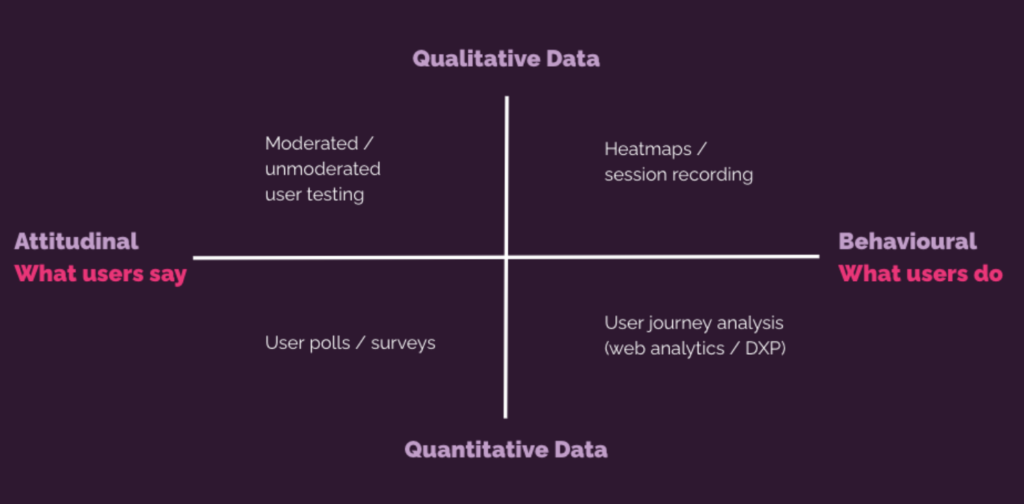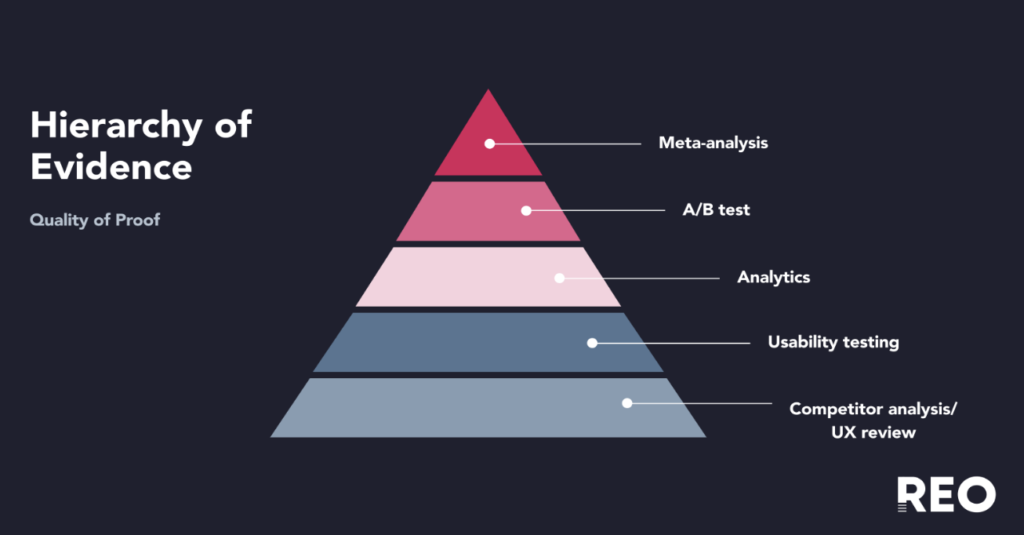Rand Fishkin discusses the importance of “non-attributable” marketing and why companies should take more risks and allow themselves the freedom to fail.
Rand Fishkin is the co-founder and CEO of SparkToro, a software company that specializes in audience research for targeted marketing. Previously, Rand was the co-founder and CEO of Moz, where he started SEOmoz as a blog that turned into a consulting company, then a software business. Over his seven years as CEO, Rand grew the company to 130+ employees, $30M+ in revenue, and brought website traffic to 30M+ visitors/year.
He’s also dedicated his professional life to helping people do better marketing through his writing, videos, speaking, and his latest book, Lost and Founder.
AB Tasty’s VP Marketing Marylin Montoya spoke with Rand Fishkin about the culture of experimentation and fear of failure when it comes to marketing channels and investments. Rand also shares some of his recommendations on how to get your brand in front of the right audience.
Here are some key takeaways from their conversation.
Taking a more risk-based approach
Rand believes there’s too much focus on large markets that people often overlook the enormous potential of smaller markets to go down the more typical venture path. In that sense, founders become biased towards huge, totally addressable markets.
“They don’t consider: here’s this tiny group of people. Maybe there are only three or 4000 people or companies who really need this product, but if I make it for them, they’re going to love it. I think that there’s a tremendous amount of opportunity there. If folks would get out of their head that you have to look for a big market,” Rand says.
People avoid such opportunities because of the regulatory challenges, restrictions, and other barriers to entry that often come with them but for Rand, these underserved markets are worth the risk because competition is scarce. There’s a real potential to build something truly special for those willing to overcome the challenges that come with it, Rand argues.
There are a lot of underserved niches and many business opportunities out there in the tech world, if companies would shift away from the “growth at all cost” mentality.
“The thing about being profitable is once you’re there, no one can take the business from you. You can just keep iterating and finding that market, finding new customers, finding new opportunities. But if you are constantly trying to chase growth unprofitably and get to the metrics needed for your next round, you know all that goes out the window,” Rand says.
Freedom to fail
Similarly, Rand states that there’s a huge competitive advantage in committing resources toward marketing channels where attribution is hard or impossible because no one else is investing in these kinds of channels. That’s where Rand believes companies should allocate their resources.
“If you take the worst 10 or 20%, worst performing 10 or 20% of your ads budget, your performance budget, and you shift that over to hard-to-measure, experimental, serendipitous, long-term brand investment types of channels, you are going to see extraordinary results.”
However, the problem is getting buy-in from more senior stakeholders within a company because of these “hard-to-attribute” and “hard-to-measure” channels. In other words, they refuse to invest in channels where they can’t prove an attribute – a change of conversion rate or sales – or return on investment. Thus, any channels that are poor at providing proof of attribution get underinvested. Rand strongly believes that it’s still possible to get clicks on an organic listing of your website and get conversions even if a brand doesn’t spend anything on ads.
“I think brand and PR and content and social and search and all these other organic things are a huge part of it. But ads are where those companies can charge because the CEO, CMO, CFO haven’t figured out that believing in hard-to-measure channels and hard-to-attribute channels and putting some of your budget towards experimental stuff is the right way to do things,” Rand argues.
According to Rand, these are exactly the kinds of channels where more resources need to be allocated as they generate a higher return on investment than any ad a company might spend on the more typical and bigger name platforms.
“Your job is to go find the places your audience pays attention to and figure out what your brand could do to be present in those places and recommended by the people who own those channels.”
According to Rand, there is a learning curve in finding the message that resonates with this audience and the content that drives their interest as well as the platforms where you can connect with them and this will all depend on who your audience is.
Experiment with AI
For Rand, the AI boom is more realistic and interesting than previous big tech trends. He especially sees its biggest advantage in solving big problems within organizations that can be best solved with large language model generative AI.
However, it’s important not to insert AI in a business or create problems just for the sake of using it or to apply it to the wrong places.
“If you find that stuff fascinating and you want to experiment with it and learn more about it, that’s great. I think that’s an awesome thing to do. Just don’t don’t go trying to create problems just to solve this, to use it.”
He believes the best use case for AI is for more tedious jobs that would be otherwise too time-consuming as opposed to using it for more tactical or strategic marketing advice. Nonetheless, he does believe that there are a lot of interesting and useful solutions and products being built with AI that will solve many problems.
What else can you learn from our conversation with Rand Fishkin?
- The importance of brand and long-term brand investments
- Why it’s hard to get leadership to shift away from common ad platforms
- How social networks have become “closed networks”
- Why attention needs to shift to your audience and how they can become “recommenders” of your product
About Rand Fishkin
Rand Fishkin is the co-founder and CEO of SparkToro, makers of fine audience research software to make audience research accessible to everyone. He’s also the founder and former CEO of Moz and also co-founded Inbound.org alongside Dharmesh Shah, which was sold to Hubspot in 2014. Rand has become a frequent worldwide keynote speaker over the years on marketing and entrepreneurship with a mission to help people do better marketing.
About 1,000 Experiments Club
The 1,000 Experiments Club is an AB Tasty-produced podcast hosted by Marylin Montoya, VP of Marketing at AB Tasty. Join Marylin and the Marketing team as they sit down with the most knowledgeable experts in the world of experimentation to uncover their insights on what it takes to build and run successful experimentation programs.



















